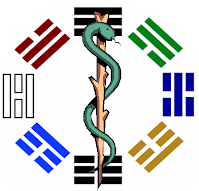What is Fungus?
Any member of a diverse group of organisms that—unlike plants and animals—obtain food by absorbing nutrients from an external source. A number of fungi cause diseases in humans and other vertebrates. In general, these infections, develop slowly, recur more frequently than bacterial infections, and they do not produce a lasting immunity in the body. A mycosis (fungal infection) is classified in one of two groups, depending on the part of the body that is being infected.
A dermatomycosis is an infection of the skin, hair, or nails.
These infections rarely progress to the internal organs. Most respond well to medication, although treatment may take several weeks. Ringworm is a common skin infection which is easily treated. Fungal infections of the nail bed may take years to eliminate through conventional medicine.
A systemic mycosis, which is an infection of the entire body, is usually more serious.
Fungal infections are typically spread by spores that enter the body through inhalation or through an opening in the skin. Some infections are passed from animals to humans or between humans. Fungi cause a number of human respiratory diseases. Coccidioidomycosis is caused by the yeast Coccidioides immitis. Although typically contracted by the inhalation of dust containing yeast spores, the fungus may also be introduced through the skin from infected soil. Initial symptoms may resemble the flu, with fever, cough, and possibly a skin rash, and the infection usually runs its course without specific treatment. In rare cases, the fungus penetrates internal tissues, such as the bones, joints, and brain, producing tumors that later form abscesses or ulcers.
Histoplasmosis is caused by the yeast-like fungus Histoplasma capsulatum, which grows in pigeons, bats, and chicken droppings. It is contracted by the inhalation of dust from animal droppings, by ingestion, or through the skin.
Some fungi produce Mycotoxins.
These are poisons produced by fungal growth in cereals, nuts, fruits, and vegetables. The most common mycotoxin is aflatoxin, produced by Aspergillus flavus and Aspergillus parasiticus. Commonly found on corn, peanuts, and tree nuts, the toxin also can be transmitted to humans through the milk, meat, or eggs of animals fed contaminated grains. Aflatoxin is one of the most potent carcinogens, or potentially cancer-causing agents, yet discovered.
Other mycotoxins include trichothecenes and zearalenone, compounds known to injure the intestines, bone marrow, lymph nodes, spleen, and thymus. They are produced by species of Fusarium that grow on grain, straw, or hay stored while damp. Occasionally, circumstances may prevent the harvesting of grains during the autumn, and the grains lie dormant in the damp fields until they are harvested in the spring. These grains are especially vulnerable to trichothecenes and zearalenone contamination. A large outbreak of trichothecenes contamination occurred in Russia in early 1944 among hungry peasants who had been searching the winter
fields for unharvested wheat and millet.
Alternative approaches can influence the body to boost its own natural capabilities to fight the invading organisms efficiently.
Alternative medicines in many forms that include Homeopathy and Acupuncture, among others, can complement medical treatment of such possible infection. These alternative therapies may help in balancing the energetic activities in the different organs, help to stimulate the immune system, and may encourage the body to get rid of the fungal accumulated toxins. A few drugs are effective, but often cause toxic side effects because treatment of systemic infections may last for several months to years to prevent relapse of the infection.
Our Approach
- Evaluation
- Detoxification
- Revitalization
- Substitution of deficiencies (Vitamins, enzymes, minerals, etc.)
- Elimination of energetic blockages
- Acupuncture body-mind energetic therapy and homeopathic remedies
This center offers a unique approach to address the problem of fungus infection.
This center puts great emphasis on treating any possible toxins, deficiencies, sub-clinical infections, nutritional or metabolic imbalances through natural and holistic approaches to promote energetic stability and health in all the systems of the body.
Auricular Medicine
Auricular Medicine is a unique and recent form of acupuncture introduced by a French physician fifty years ago. While general acupuncture is concerned with the energetic status of meridians. Auricular Medicine probes the energetic status of each organ in the body, thus gaining invaluable information about the status of the body as a whole and every single organ in particular. Using this information to correlate with the clinical symptoms is only the first step towards our holistic approach.
Homeopathy
Homeopathic remedies, unlike herbs are manufactured according to the US homeopathic pharmacopeia. This ensures high quality manifacturing techniques. These remedies are known to have no side effects or complications and are free from toxins. These are not considered nutritional supplements as the case with herbal products.
Acupuncture
Acupuncture is another powerful energetic technique that could induce powerful energetic changes in the body, aiming at the correction of any possible imbalances. This may help the restoration of harmonious energetic balance in the body.
A study by Mayo Clinic researchers ,published in 1999, found that the cause of chronic sinusitis is an immune system response to fungus. Using new methods of collecting and testing mucus, they discovered fungus in 96% of patients. They identified a total of 40 different kinds of fungi in these patients. In average each patient was found to harbor between 2-3 kinds of these fungi.
Chronic sinus infection (Mayo Clinic Study)
